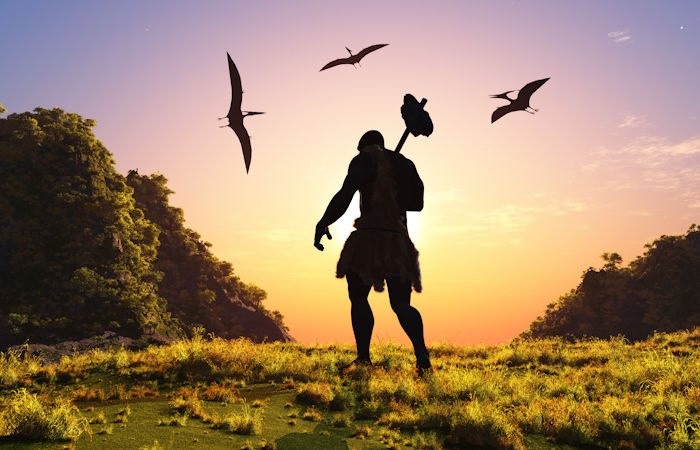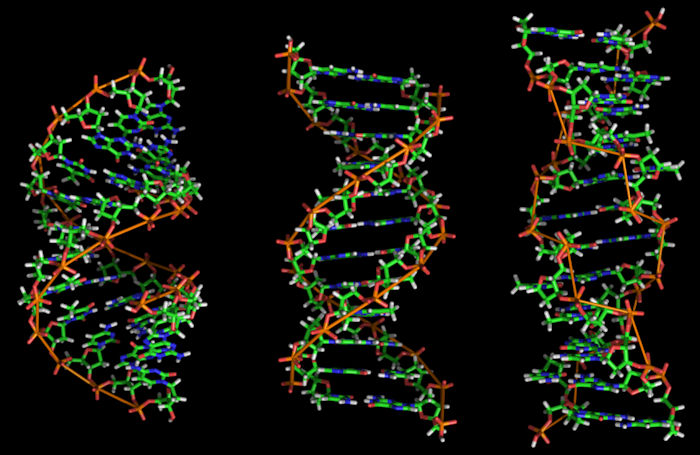Conny Waters – AncientPages.com – An analysis of ancient genomes suggests that different branches of the human family tree interbred multiple times and that some humans carry DNA from an archaic, unknown ancestor. Who was this mysterious ancient individual?
Roughly 50,000 years ago, a group of humans migrated out of Africa and interbred with Neanderthals in Eurasia. But that’s not the only time our ancient human ancestors and their relatives swapped DNA. The sequencing of genomes from Neanderthals and a less well-known ancient group, the Denisovans, has yielded many new insights into these interbreeding events and into the movement of ancient human populations.

Credit: Adobe Stock – Kovalenko I
Researchers developed an algorithm for analyzing genomes that can identify segments of DNA that came from other species, even if that gene flow occurred thousands of years ago and came from an unknown source. They used the algorithm to look at genomes from two Neanderthals, a Denisovan and two African humans. The researchers found evidence that 3 percent of the Neanderthal genome came from ancient humans, and estimate that the interbreeding occurred between 200,000 and 300,000 years ago.
Furthermore, 1 percent of the Denisovan genome likely came from an unknown and more distant relative, possibly Homo erectus, and about 15% of these “super-archaic” regions may have been pᴀssed down to modern humans who are alive today.
The findings confirm previously reported cases of gene flow between ancient humans and their relatives, and also point to new instances of interbreeding. Given the number of these events, the researchers say that genetic exchange was likely whenever two groups overlapped in time and space. Their new algorithm solves the challenging problem of identifying tiny remnants of gene flow that occurred hundreds of thousands of years ago, when only a handful of ancient genomes are available. This algorithm may also be useful for studying gene flow in other species where interbreeding occurred, such as in wolves and dogs.
“What I think is exciting about this work is that it demonstrates what you can learn about deep human history by jointly reconstructing the full evolutionary history of a collection of sequences from both modern humans and archaic hominins,” said author Adam Siepel.
As reported earlier on AncientPages.com, scientists have previously used artificial intelligence to unravel the mystery of human evolution. If scientists can identify this unknown ancestor, the study’s result can shed new light on modern human DNA. Previous studies reveal researchers unexpectedly discovered two separate episodes of Denisovan genetic intermixing.
Researchers determined that the genomes of two groups of modern humans with Denisovan ancestry – individuals from Oceania and individuals from East Asia – are uniquely different, indicating that there were two separate episodes of Denisovan admixture.
The idea that a third ancestor once lived alongside humans has only been a theory, and AI can help researchers confirm his existence. This can be done by deep learning, “an algorithm that imitates the way in which the nervous system of mammals works, with different artificial neurons that specialize and learn to detect, in data, patterns that are important for performing a given task,” Òscar Lao, principal investigator at the CNAG-CRG stated.

From left to right, the structures of A-, B- and Z-DNA. Credit: Wikipedia
“We have used this property to get the algorithm to learn to predict human demographics using genomes obtained through hundreds of thousands of simulations. Whenever we run a simulation, we are traveling along a possible path in the history of humankind. Of all simulations, deep learning allows us to observe what makes the ancestral puzzle fit together, “ Lao explained.
According to the Center for Genomic Regulation, “an extinct hominid could explain the history of humankind
The deep learning analysis has revealed that the extinct hominid is probably a descendant of the Neanderthal and Denisovan populations.”
“Our theory coincides with the hybrid specimen discovered recently in Denisova, although as yet, we cannot rule out other possibilities,” said Mayukh Mondal, an investigator of the University of Tartu and former investigator at the IBE.
Written by Conny Waters – AncientPages.com Staff Writer
Expand for references
- Hubisz MJ, Williams AL, Siepel A (2020) Mapping gene flow between ancient hominins through demography-aware inference of the ancestral recombination graph. PLoS Genet 16(8): e1008895. doi.org/10.1371/journal.pgen.1008895
- Conny Waters – Has AI Found An Unknown Human Ancestor? AncientPages.com
- Conny Waters – Enigmatic Denisovans Interbred With Modern Humans More Than Once, AncientPages.com
- Sharon R. Browning,Brian L. Browning,Ying Zhou,Serena Tucci,Joshua M. Akey, Analysis of Human Sequence Data Reveals Two Pulses of Archaic Denisovan Admixture, doi.org/10.1016/j.cell.2018.02.031





